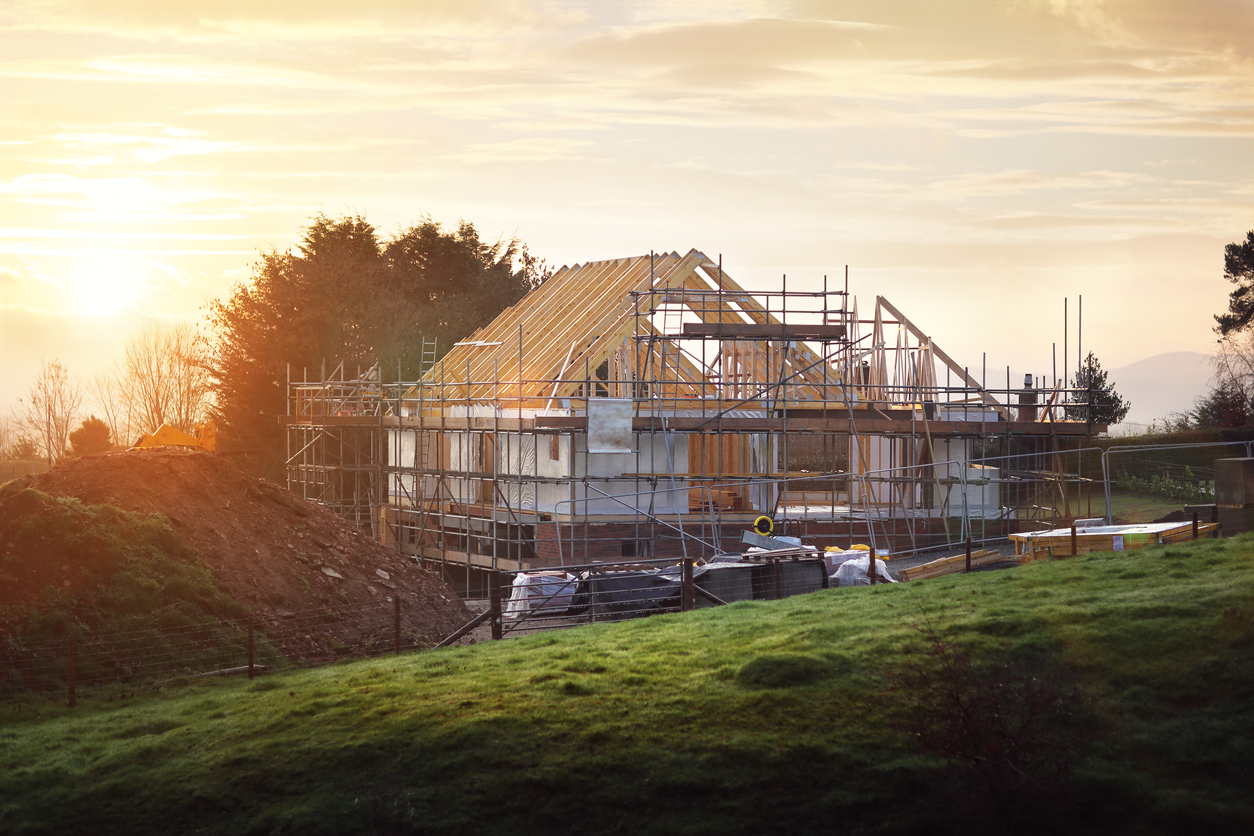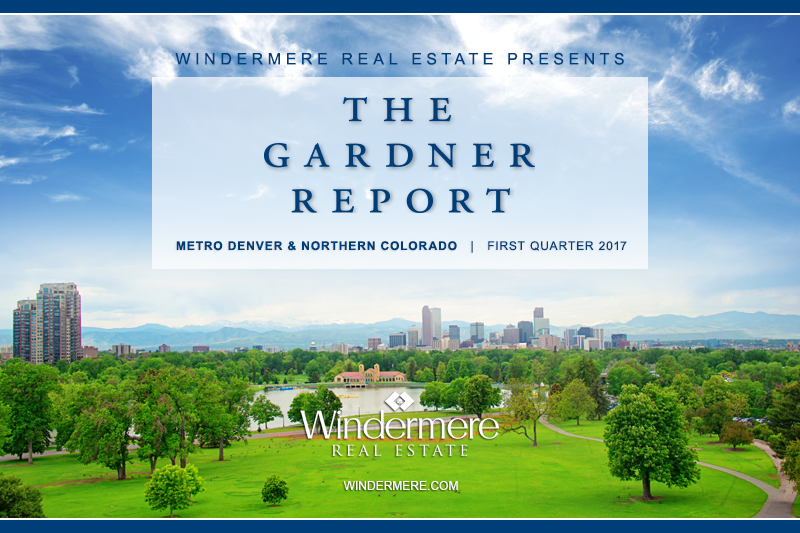Standing Low
The standing inventory of residential properties currently for sale is staggeringly low.
The number of active properties for sale is almost 90% below the average for this time of year.
In Metro Denver, there are 1,144 residential properties for sale today.
In Larimer County, there are 136 and in Weld County there are 174.
Current inventory along the Front Range is essentially half of what it was one year ago.
The low standing inventory bolsters our belief that nothing resembling a decline in housing prices is on the horizon. The low supply will continue to put upward pressure on prices.
It is time to register for our annual Market Forecast with Chief Economist Matthew Gardner. This year the event will be hosted online on Thursday February 3rd from 11:00 to 12:00.
You can register at www.ColoradoForecast.com
Bubble Burst

Every so often we will hear a concern that another housing bubble is forming.
To help answer that question it’s valuable to look at the reasons that caused the last one.
There were three main drivers of the bubble that burst in 2008:
1. Easy Credit – loans were very easy to attain
2. Over-Leverage – people were using their homes at ATM’s
3. Over-Supply – too many new homes were being built
Now, let’s compare that to today:
1. Stricter Credit – the average home buyer today has a FICO score of 755
2. High Equity – collectively, U.S. homeowners have $19 Trillion of equity in their homes and collective mortgage debt has not increased for 13 years
3. Under-Supply – today we are building only two-thirds of the new homes being built in 2004 yet the population is much higher
Given this healthy information, we don’t see another housing bubble forming today.
New Gardner Report!


The following analysis of the Metro Denver & Northern Colorado real estate market (which now includes Clear Creek, Gilpin, and Park counties) is provided by Windermere Real Estate Chief Economist Matthew Gardner. We hope that this information may assist you with making better-informed real estate decisions. For further information about the housing market in your area, please don’t hesitate to contact your Windermere agent.
ECONOMIC OVERVIEW
Colorado’s economy continues to grow with the addition of 44,800 new non-agricultural jobs over the past 12 months. This represents a reasonable growth rate of 1.7%. As stated in last quarter’s Gardner Report, we continue to see a modest slowdown in employment gains, but that’s to be expected at this stage of the business cycle. I predict that employment growth in Colorado will pick back up as we move through the year, adding a total of 70,000 new jobs in 2019, which represents a growth rate of 2.6%.
In February, the state unemployment rate was 3.7%, up from 2.9% a year ago. The increase is essentially due to labor force growth, which rose by more than 84,000 people over the past year. On a seasonally adjusted basis, unemployment rates in all the markets contained in this report haven’t moved much in the past year, but Boulder saw a modest drop (2.7%), and the balance of the state either remained at the same level as a year ago or rose very modestly.
HOME SALES
- In the first quarter of 2019, 11,164 homes sold — a drop of 3% compared to the first quarter of 2018 and down 13.5% from the fourth quarter of last year. Pending sales in the quarter were a mixed bag. Five counties saw an increase, but five showed signs of slowing.
- The only market that had sales growth was Adams, which rose 4.9%. The rest of the counties contained in this report saw sales decline, with a significant drop in the small Park County area.
- I believe the drop in the number of home sales is partially due to the significant increase in listings (+45.6%), which has given would-be home buyers more choice and less need to act quickly.
- As mentioned above, inventory growth in the quarter was significant, but I continue to believe that the market will see sales rise. I expect the second half of the year to perform better than the first.

HOME PRICES
 Home prices continue to trend higher, but the rate of growth is tapering. The average home price in the region rose just 2.1% year-over-year to $456,243. Home prices were .3% higher than in the fourth quarter of 2018.
Home prices continue to trend higher, but the rate of growth is tapering. The average home price in the region rose just 2.1% year-over-year to $456,243. Home prices were .3% higher than in the fourth quarter of 2018.- I anticipate that the drop in interest rates early in the year will likely get more buyers off the fence and this will allow prices to rise.
- Appreciation was again strongest in Park County, where prices rose 21.9%. We still attribute this rapid increase to it being a small market. Only Clear Creek County experienced a drop in average home price. Similar to Park County, this is due to it being a very small market, making it more prone to significant swings.
- Affordability remains an issue in many Colorado markets but that may be offset by the drop in interest rates.

DAYS ON MARKET
- The average number of days it took to sell a home in Colorado rose five days compared to the first quarter of 2018.
- The amount of time it took to sell a home dropped in two counties — Gilpin and Park — compared to the first quarter of 2018. The rest of the counties in this report saw days-on-market rise modestly with the exception of the small Clear Creek market, which rose by 26 days.
- In the first quarter of 2019, it took an average of 42 days to sell a home in the region, an increase of four days compared to the final quarter of 2018.
- Job growth drives housing demand, but buyers are faced with more choice and are far less frantic than they were over the past few years. That said, I anticipate the late spring will bring more activity and sales.

CONCLUSIONS
 This speedometer reflects the state of the region’s real estate market using housing inventory, price gains, home sales, interest rates, and larger economic factors.
This speedometer reflects the state of the region’s real estate market using housing inventory, price gains, home sales, interest rates, and larger economic factors.
For the first quarter of 2019, I have moved the needle a little more in favor of buyers. I am watching listing activity closely to see if we get any major bumps above the traditional increase because that may further slow home price growth; however, the trend for 2019 will continue towards a more balanced market.
 As Chief Economist for Windermere Real Estate, Matthew Gardner is responsible for analyzing and interpreting economic data and its impact on the real estate market on both a local and national level. Matthew has over 30 years of professional experience both in the U.S. and U.K.
As Chief Economist for Windermere Real Estate, Matthew Gardner is responsible for analyzing and interpreting economic data and its impact on the real estate market on both a local and national level. Matthew has over 30 years of professional experience both in the U.S. and U.K.
In addition to his day-to-day responsibilities, Matthew sits on the Washington State Governors Council of Economic Advisors; chairs the Board of Trustees at the Washington Center for Real Estate Research at the University of Washington; and is an Advisory Board Member at the Runstad Center for Real Estate Studies at the University of Washington where he also lectures in real estate economics.
Are We Bubbly?

Because our Northern Colorado market has been so active over the last four years, clients often ask me if wIe think there is a housing bubble forming.
There are several key statistics which we track closely in order to answer that question.
Here is one fact that we find to be insightful…
One of the root causes of the last housing bubble was the glut of inventory, and specifically new home inventory. Quite simply, the market was being oversupplied with new homes. The rules of economics say when there is oversupply, prices must come down.
Today, there are far fewer new home starts compared to 2004 and 2005 when the last bubble was forming – despite there being a larger population.
According to our friends at Metrostudy who track the new home market, Northern Colorado has had 4,452 new home starts in the last 12 months.
That number is only 60% of what it was at the height of construction in early 2005.
It is also interesting to note that over the last 12 months there have been 4,473 new home closings which shows that demand is keeping up with supply.
So when you drive around Northern Colorado and notice all the new homes being built, know that construction activity is far less than what is was during the bubble and that demand is keeping up with supply.
In case you missed our annual real estate Forecast event, you can reach out to me to see the presentation slides or receive a video recap of the information. Just email me at phunter@windermere.com
Update On Market Absorption (Amount of Inventory)

Here we are halfway through the summer already! Time flies when you are having fun I guess!
I want to get you the update on the quarterly real estate market absorption rate that I analyze each quarter for Fort Collins. As a reminder, inventory or Absorption Rate is the amount of time it would take to sell all of the homes on the market today, if no more homes were to be listed. We have been hovering around 1.1 months to 1.3 months for over a year now (SUPER low inventory, a balanced market is 6 months of inventory according the National Association of REALTORS). But we are seeing a slight uptick to 1.58 months at the beginning of July. While that is still very low and certainly a seller’s market, we are seeing more homes hit the market and sit around for a week or two, which is providing great opportunities for the buyers I have been working with. It is a slightly less daunting market than it was in March.
If you are interested in learning more about how this could be an opportunity for you as a Buyer in the Northern Colorado area, please feel free to give me a call or shoot me an email! Enjoy your week!
The New Gardner Report!

|
|||||||||||||||||||
|
|||||||||||||||||||
|
|||||||||||||||||||
|
 Facebook
Facebook
 Twitter
Twitter
 Pinterest
Pinterest
 Copy Link
Copy Link









